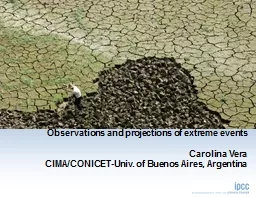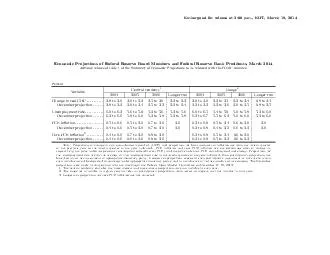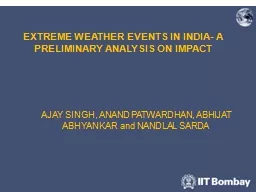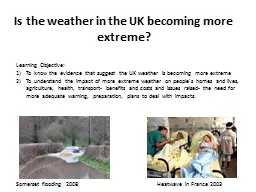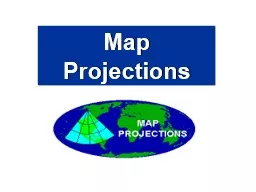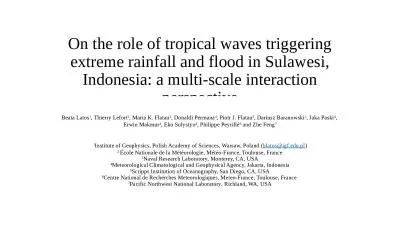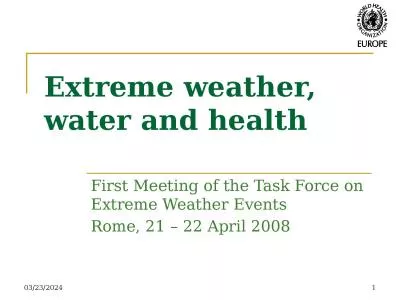PPT-Observations and projections of extreme events
Author : olivia-moreira | Published Date : 2016-04-11
Carolina Vera CIMACONICETUniv of Buenos Aires Argentina sample Overview of SREX Chapter 3 Authors Sonia Seneviratne Neville Nicholls David Easterling Clare
Presentation Embed Code
Download Presentation
Download Presentation The PPT/PDF document "Observations and projections of extreme ..." is the property of its rightful owner. Permission is granted to download and print the materials on this website for personal, non-commercial use only, and to display it on your personal computer provided you do not modify the materials and that you retain all copyright notices contained in the materials. By downloading content from our website, you accept the terms of this agreement.
Observations and projections of extreme events: Transcript
Download Rules Of Document
"Observations and projections of extreme events"The content belongs to its owner. You may download and print it for personal use, without modification, and keep all copyright notices. By downloading, you agree to these terms.
Related Documents

